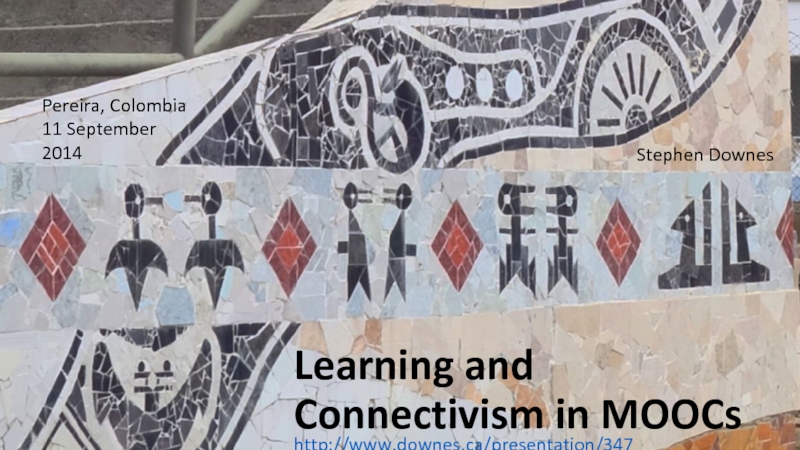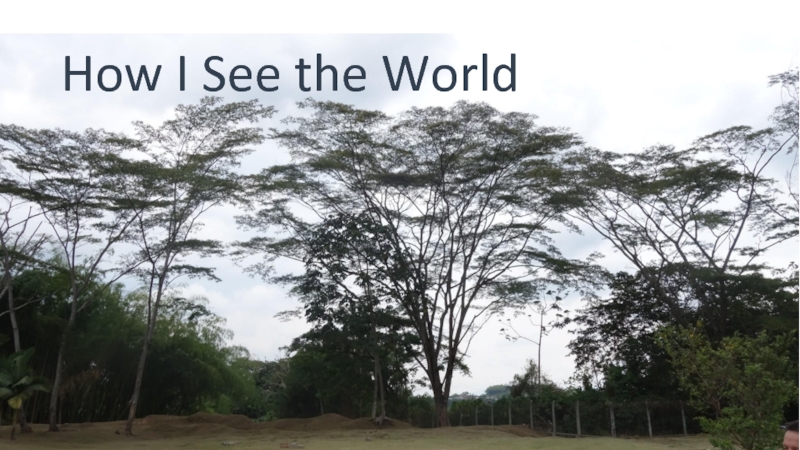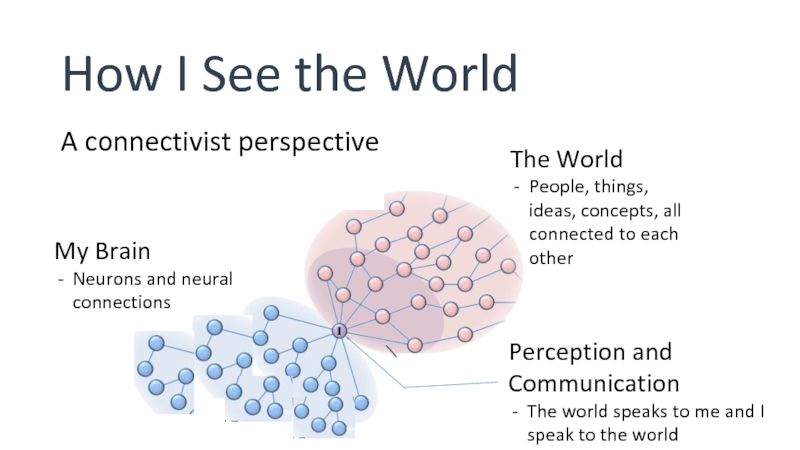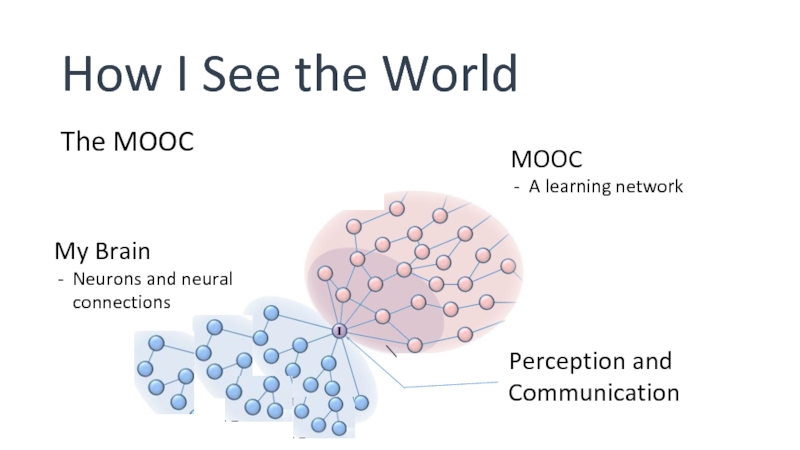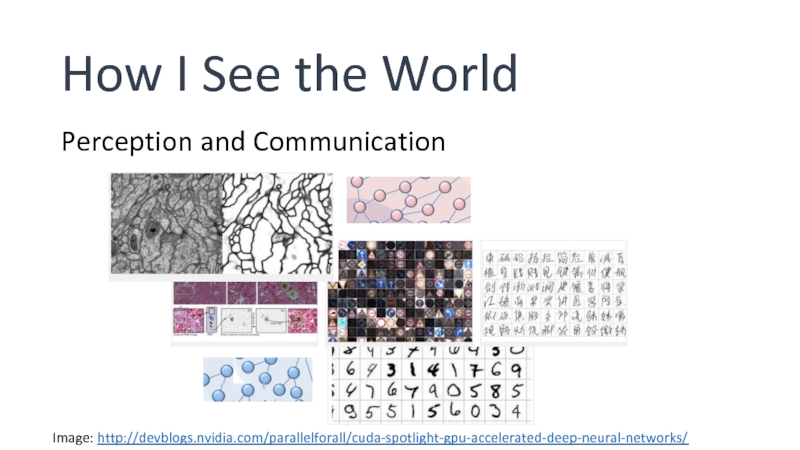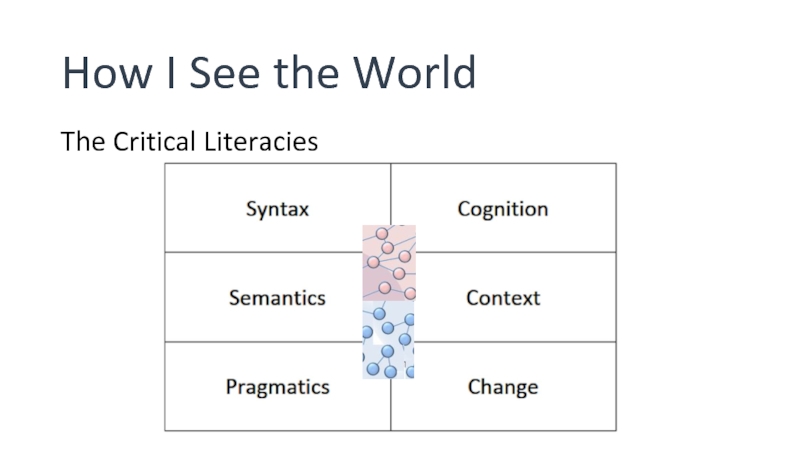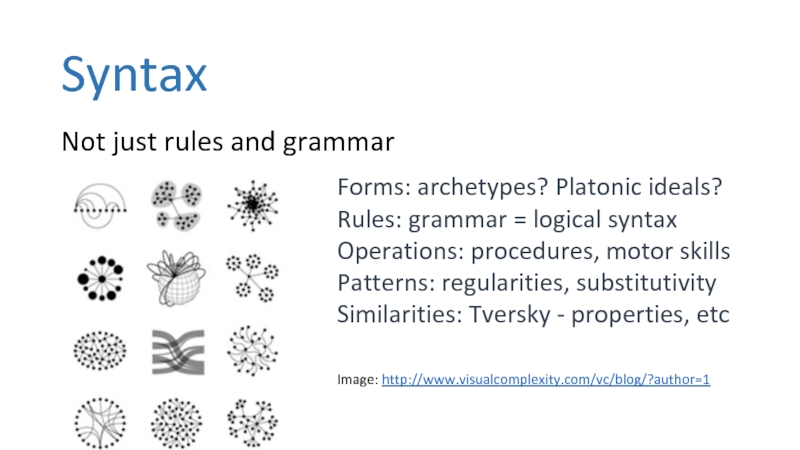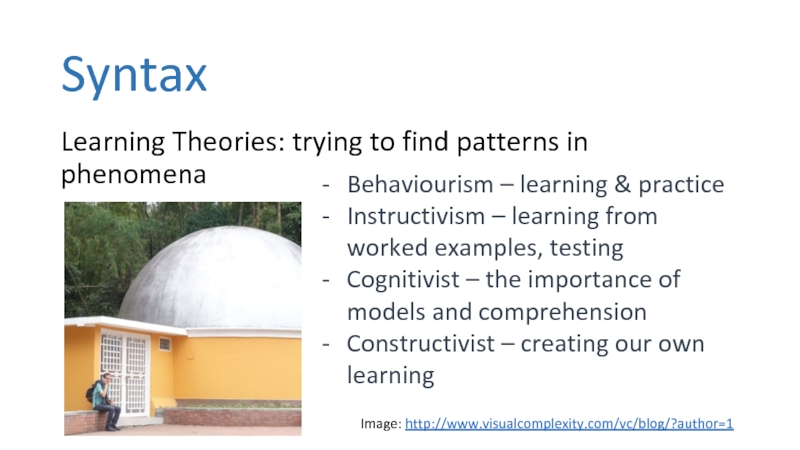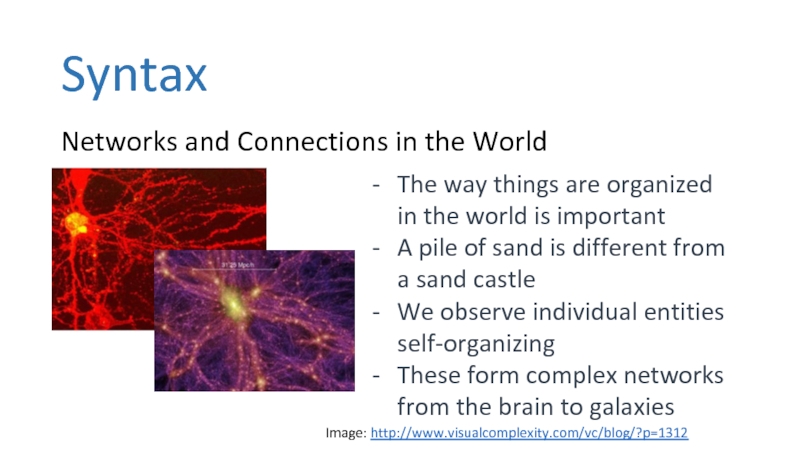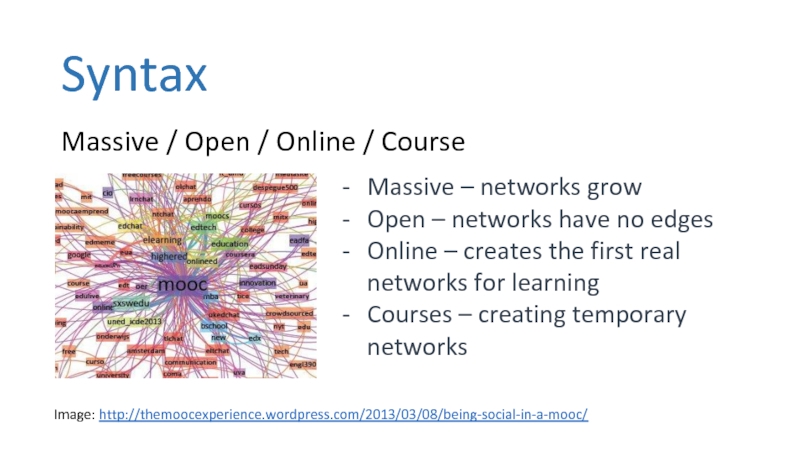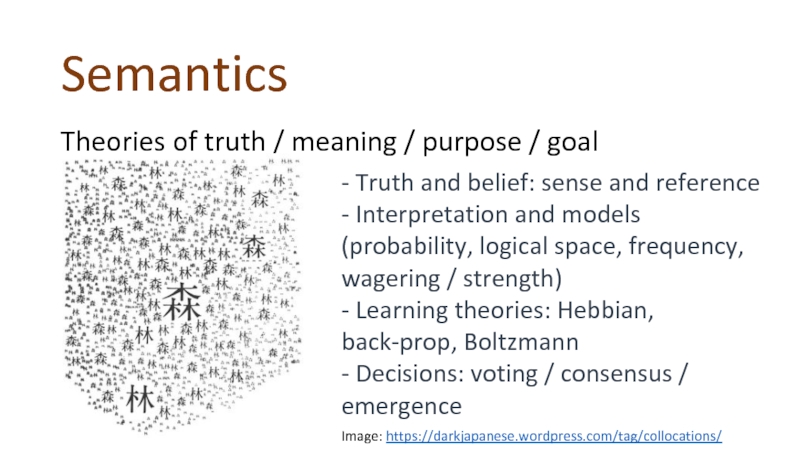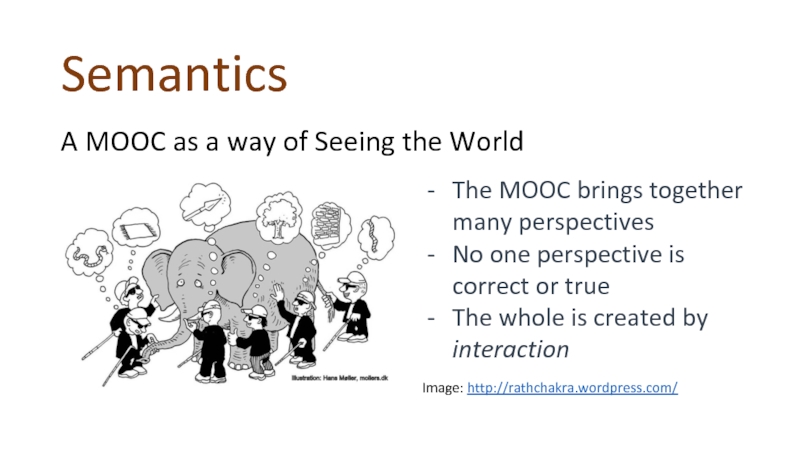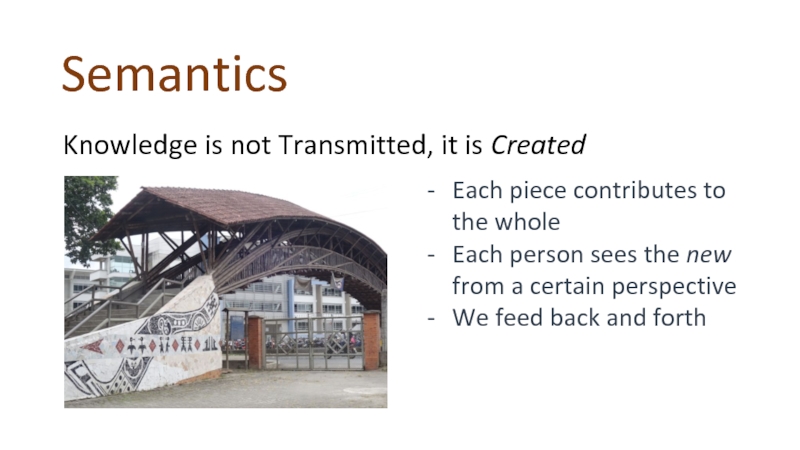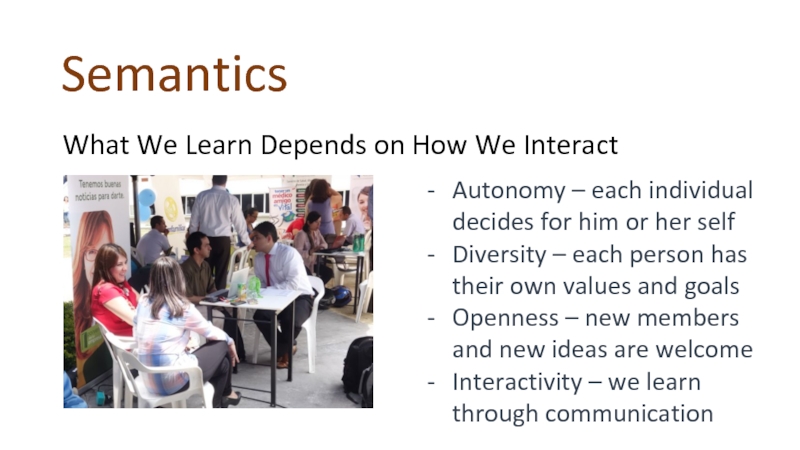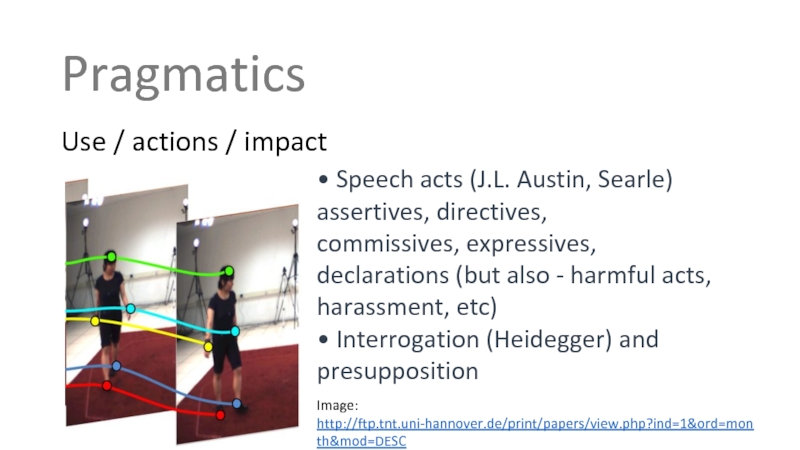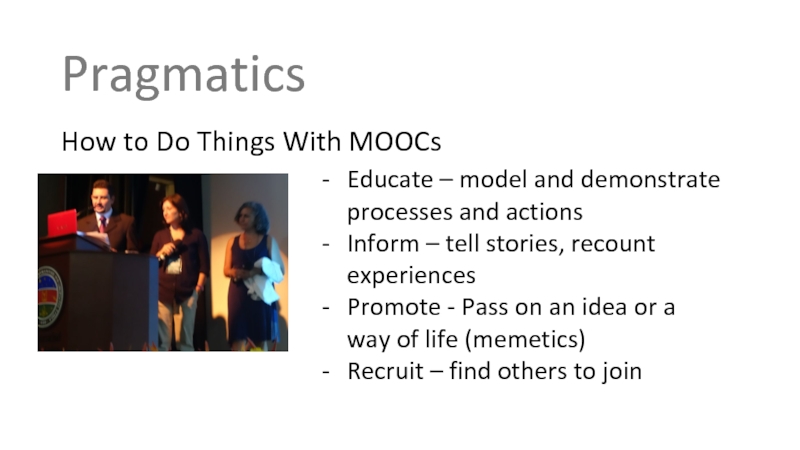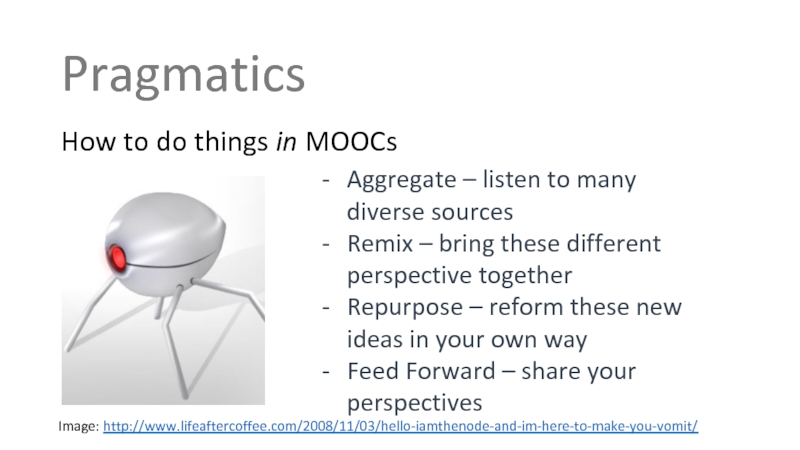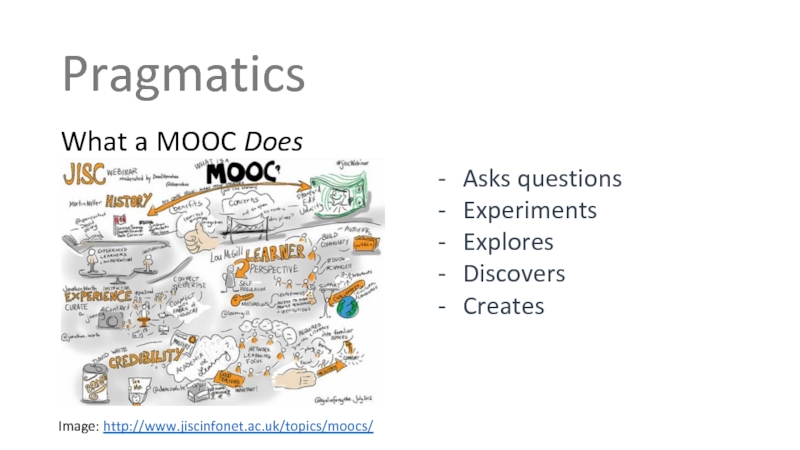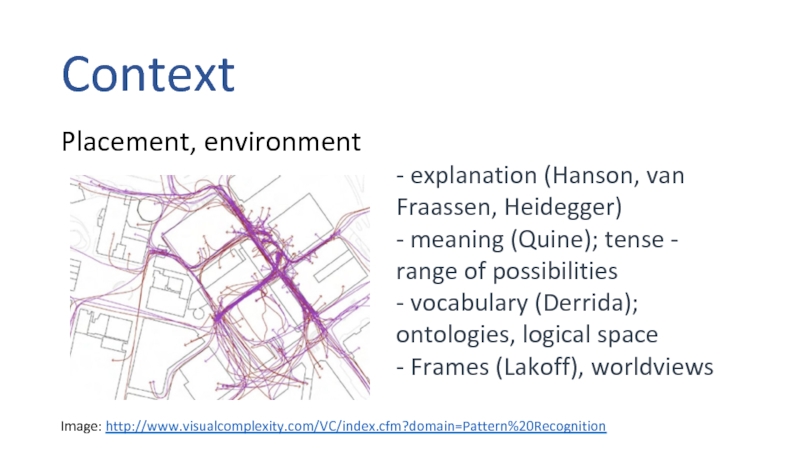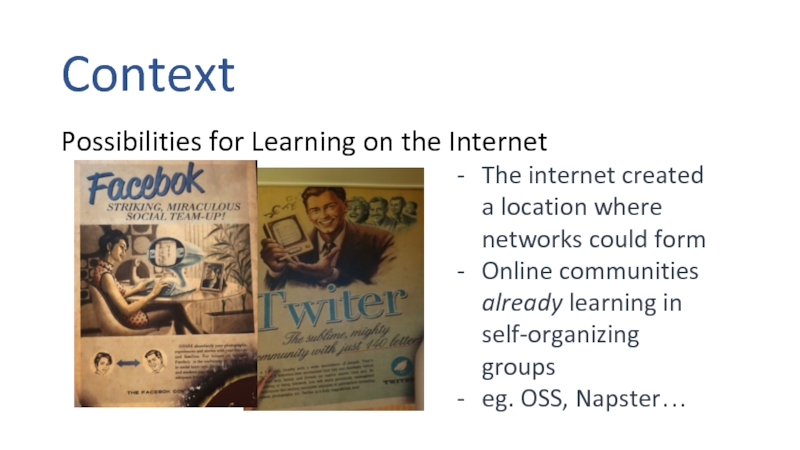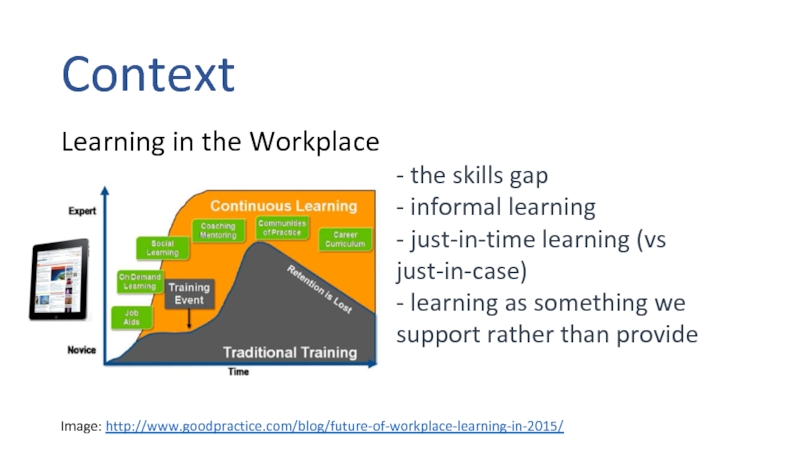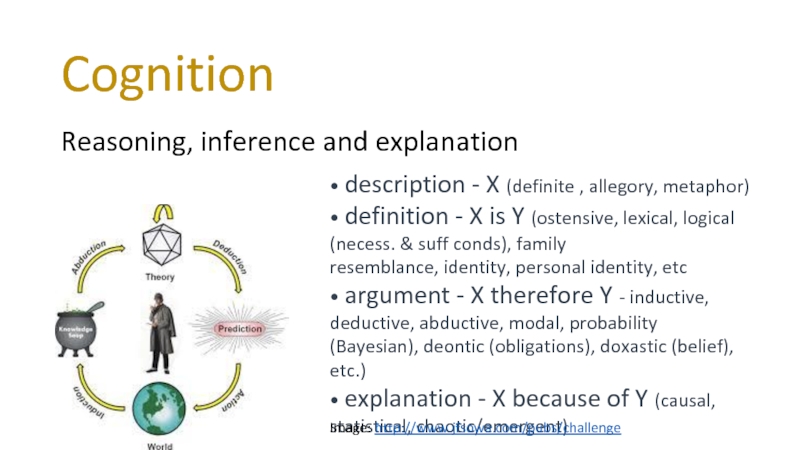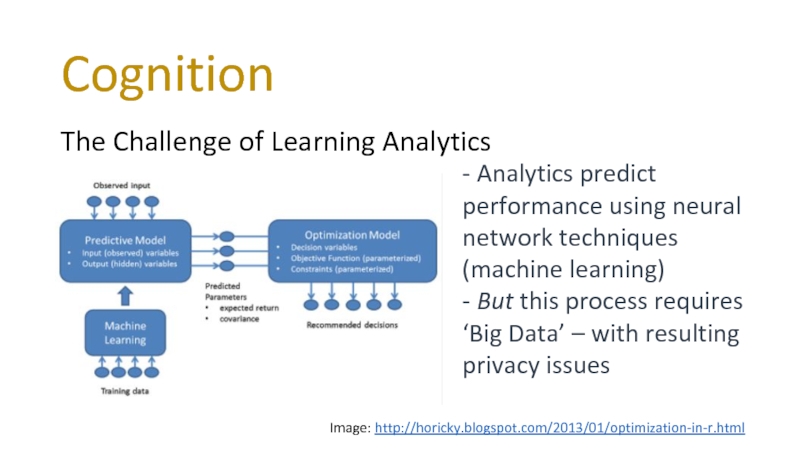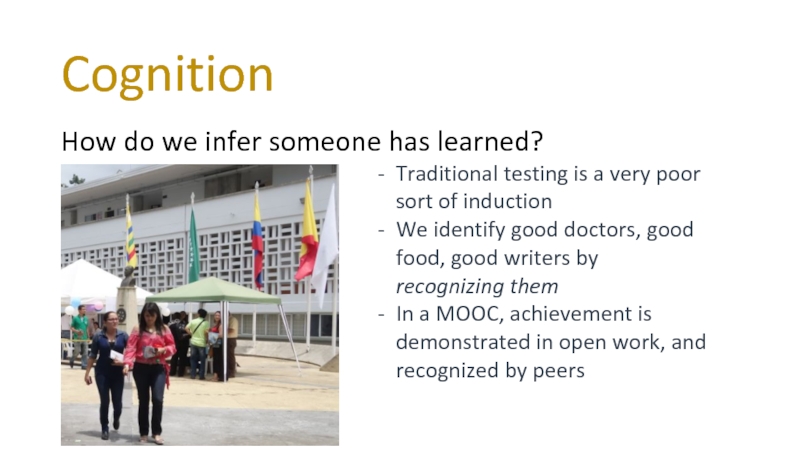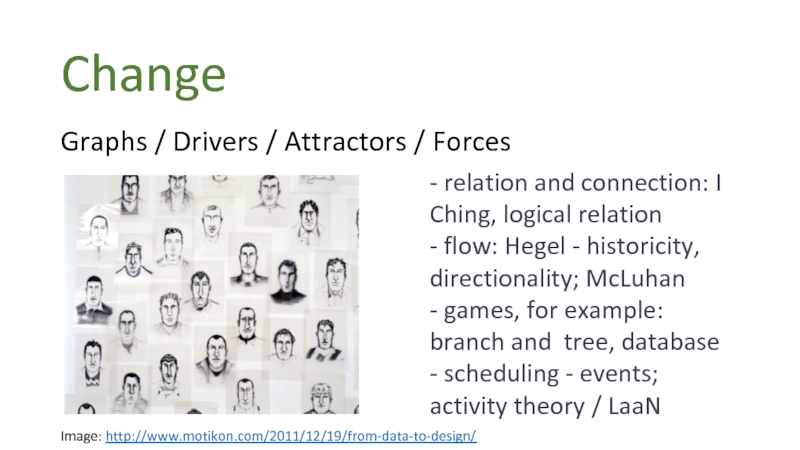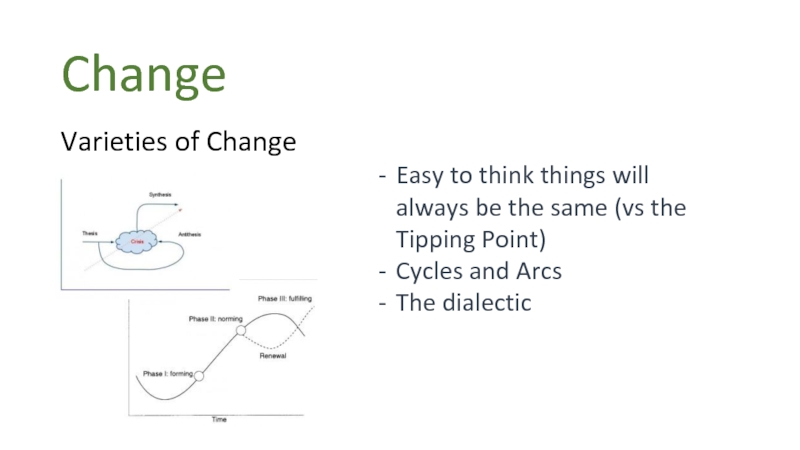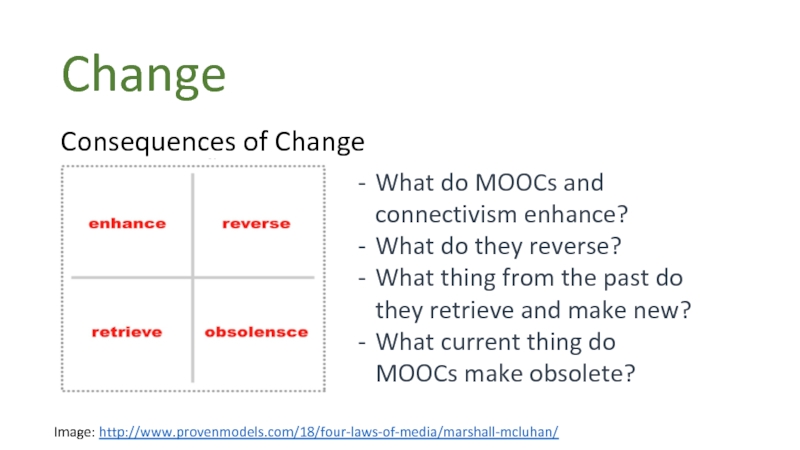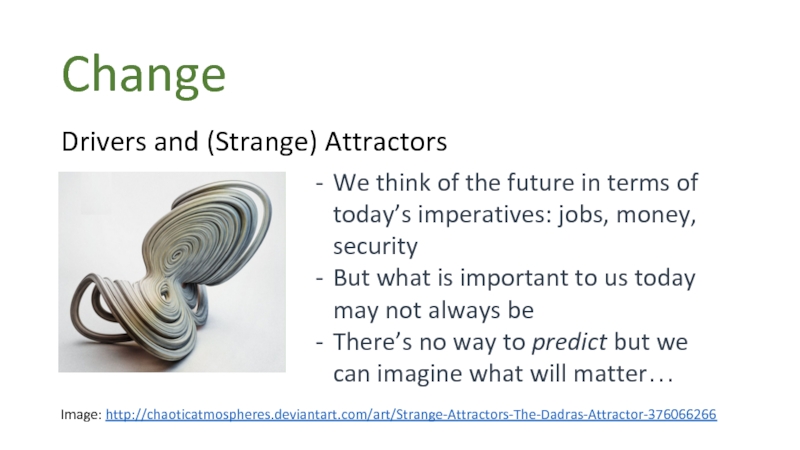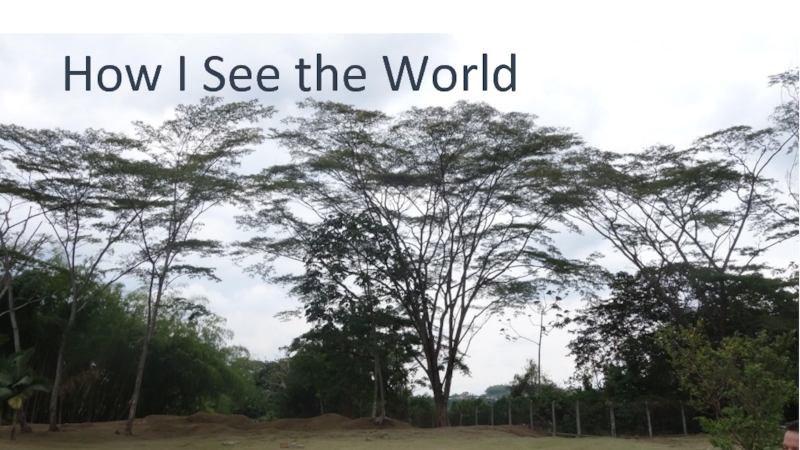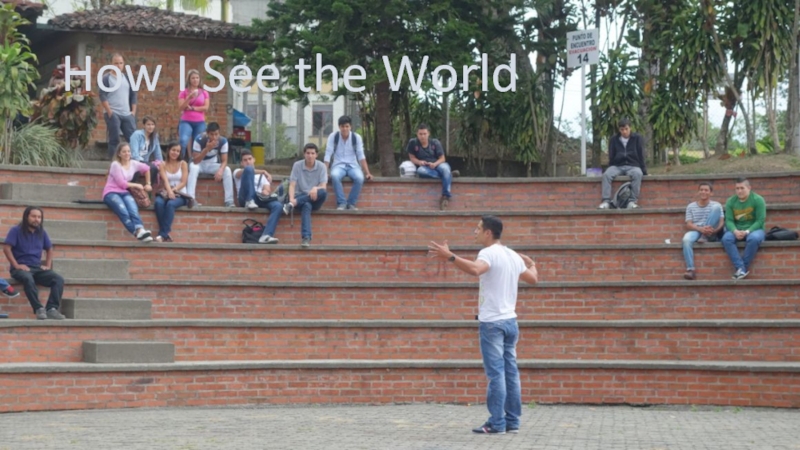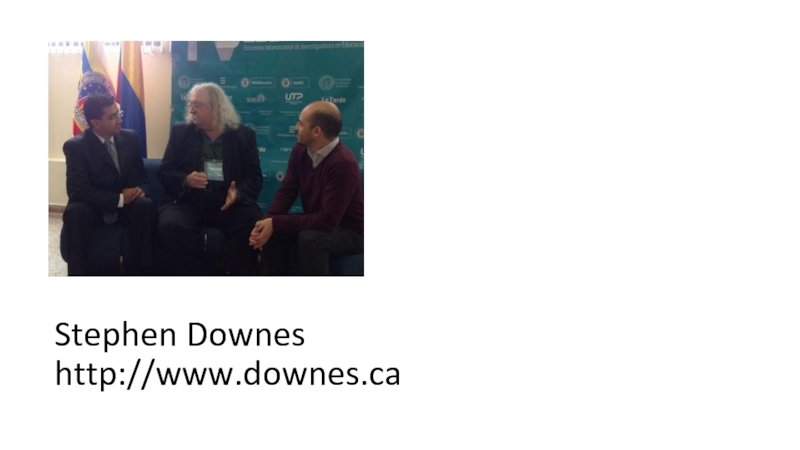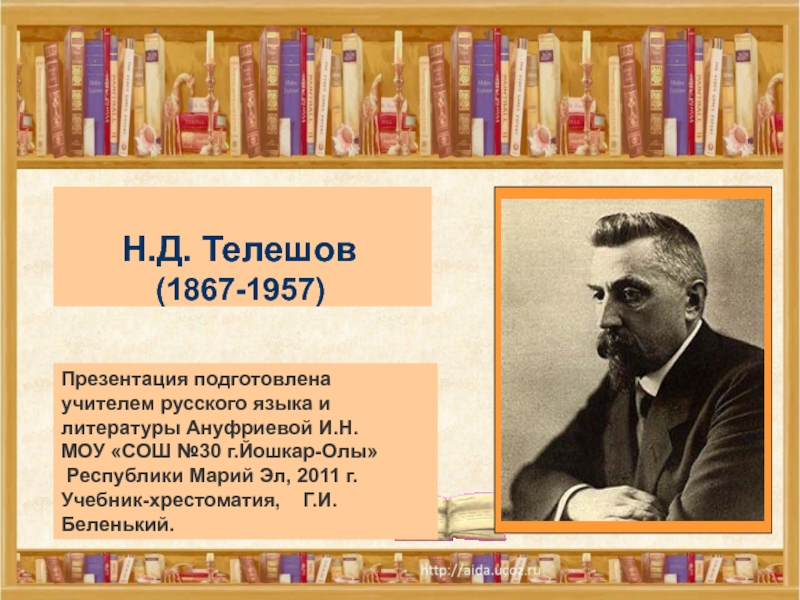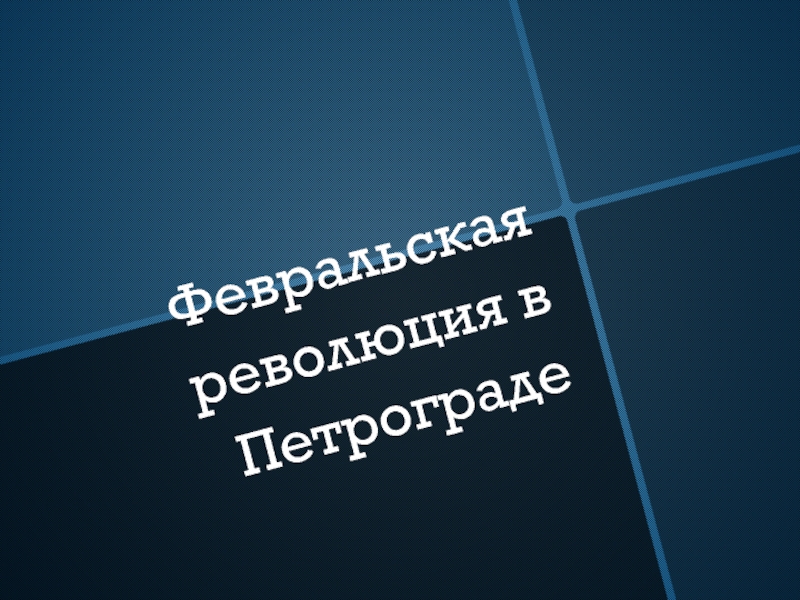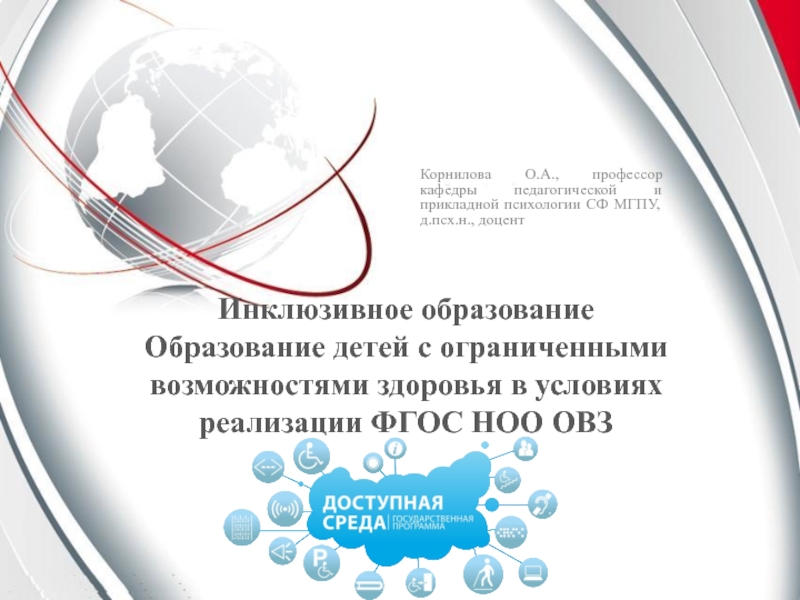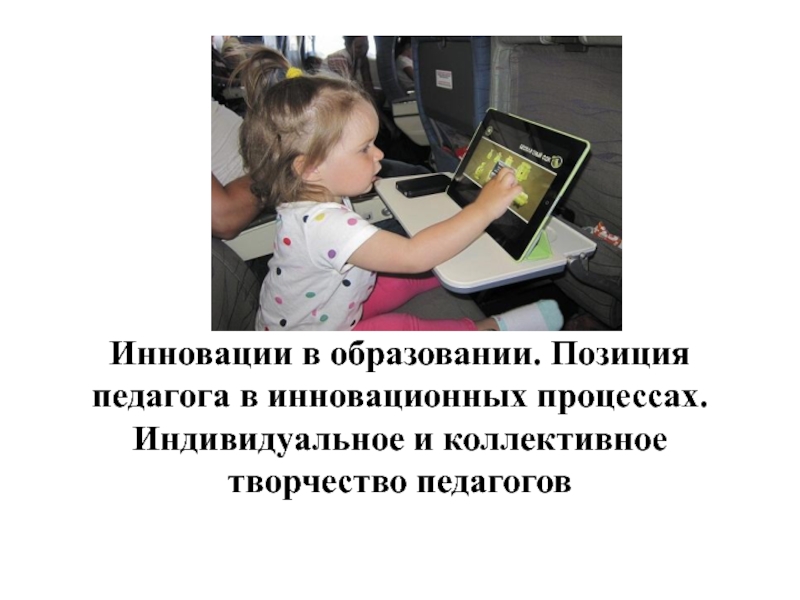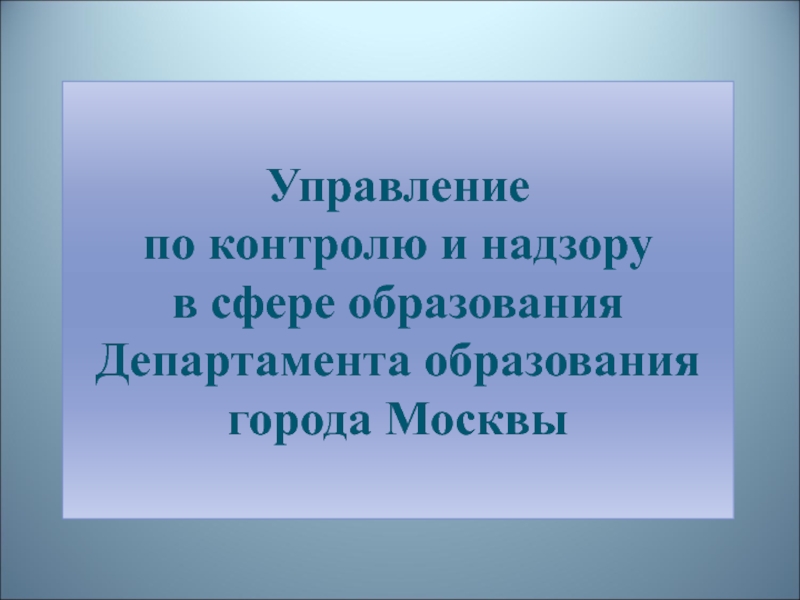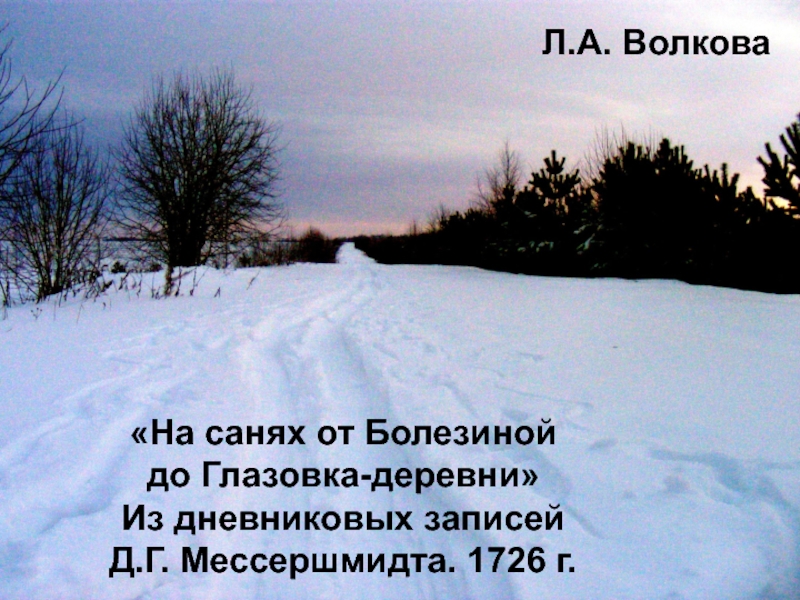- Главная
- Разное
- Дизайн
- Бизнес и предпринимательство
- Аналитика
- Образование
- Развлечения
- Красота и здоровье
- Финансы
- Государство
- Путешествия
- Спорт
- Недвижимость
- Армия
- Графика
- Культурология
- Еда и кулинария
- Лингвистика
- Английский язык
- Астрономия
- Алгебра
- Биология
- География
- Детские презентации
- Информатика
- История
- Литература
- Маркетинг
- Математика
- Медицина
- Менеджмент
- Музыка
- МХК
- Немецкий язык
- ОБЖ
- Обществознание
- Окружающий мир
- Педагогика
- Русский язык
- Технология
- Физика
- Философия
- Химия
- Шаблоны, картинки для презентаций
- Экология
- Экономика
- Юриспруденция
Learning andConnectivism in MOOCs презентация
Содержание
- 1. Learning andConnectivism in MOOCs
- 2. How I See the World
- 3. How I See the World A connectivist
- 4. How I See the World The MOOC
- 5. How I See the World Perception and Communication Image: http://devblogs.nvidia.com/parallelforall/cuda-spotlight-gpu-accelerated-deep-neural-networks/
- 6. How I See the World The Critical Literacies
- 7. Syntax Not just rules and grammar Forms:
- 8. Syntax Learning Theories: trying to find patterns
- 9. Syntax Networks and Connections in the World
- 10. Syntax Massive / Open / Online /
- 11. Semantics Theories of truth / meaning /
- 12. Semantics A MOOC as a way of
- 13. Semantics Knowledge is not Transmitted, it is
- 14. Semantics What We Learn Depends on How
- 15. Pragmatics Use / actions / impact
- 16. Pragmatics How to Do Things With
- 17. Pragmatics How to do things in
- 18. Pragmatics What a MOOC Does Asks questions Experiments Explores Discovers Creates Image: http://www.jiscinfonet.ac.uk/topics/moocs/
- 19. Context Placement, environment ‐ explanation (Hanson, van
- 20. Context Possibilities for Learning on the Internet
- 21. Context Learning in the Workplace ‐ the
- 22. Cognition Reasoning, inference and explanation • description
- 23. Cognition The Challenge of Learning Analytics Image:
- 24. Cognition How do we infer someone has
- 25. Change Graphs / Drivers / Attractors /
- 26. Change Varieties of Change Easy to
- 27. Change Consequences of Change Image: http://www.provenmodels.com/18/four-laws-of-media/marshall-mcluhan/
- 28. Change Drivers and (Strange) Attractors Image: http://chaoticatmospheres.deviantart.com/art/Strange-Attractors-The-Dadras-Attractor-376066266
- 29. How I See the World
- 30. How I See the World
- 31. Stephen Downes http://www.downes.ca
Слайд 1Learning and
Connectivism in MOOCs
Stephen Downes
Pereira, Colombia
11 September
2014
http://www.downes.ca/presentation/347
Слайд 3How I See the World
A connectivist perspective
The World
People, things, ideas, concepts,
My Brain
Neurons and neural connections
Perception and Communication
The world speaks to me and I speak to the world
Слайд 4How I See the World
The MOOC
MOOC
A learning network
My Brain
Neurons and neural
Perception and Communication
Слайд 5How I See the World
Perception and Communication
Image: http://devblogs.nvidia.com/parallelforall/cuda-spotlight-gpu-accelerated-deep-neural-networks/
Слайд 7Syntax
Not just rules and grammar
Forms: archetypes? Platonic ideals?
Rules: grammar = logical
Operations: procedures, motor skills
Patterns: regularities, substitutivity
Similarities: Tversky ‐ properties, etc
Image: http://www.visualcomplexity.com/vc/blog/?author=1
Слайд 8Syntax
Learning Theories: trying to find patterns in phenomena
Behaviourism – learning &
Instructivism – learning from worked examples, testing
Cognitivist – the importance of models and comprehension
Constructivist – creating our own learning
Image: http://www.visualcomplexity.com/vc/blog/?author=1
Слайд 9Syntax
Networks and Connections in the World
The way things are organized in
A pile of sand is different from a sand castle
We observe individual entities self-organizing
These form complex networks from the brain to galaxies
Image: http://www.visualcomplexity.com/vc/blog/?p=1312
Слайд 10Syntax
Massive / Open / Online / Course
Massive – networks grow
Open
Online – creates the first real networks for learning
Courses – creating temporary networks
Image: http://themoocexperience.wordpress.com/2013/03/08/being-social-in-a-mooc/
Слайд 11Semantics
Theories of truth / meaning / purpose / goal
‐ Truth and
‐ Interpretation and models (probability, logical space, frequency, wagering / strength)
‐ Learning theories: Hebbian, back‐prop, Boltzmann
‐ Decisions: voting / consensus / emergence
Image: https://darkjapanese.wordpress.com/tag/collocations/
Слайд 12Semantics
A MOOC as a way of Seeing the World
Image: http://rathchakra.wordpress.com/
The
No one perspective is correct or true
The whole is created by interaction
Слайд 13Semantics
Knowledge is not Transmitted, it is Created
Each piece contributes to the
Each person sees the new from a certain perspective
We feed back and forth
Слайд 14Semantics
What We Learn Depends on How We Interact
Autonomy – each individual
Diversity – each person has their own values and goals
Openness – new members and new ideas are welcome
Interactivity – we learn through communication
Слайд 15Pragmatics
Use / actions / impact
• Speech acts (J.L. Austin, Searle)
commissives, expressives, declarations (but also ‐ harmful acts,
harassment, etc)
• Interrogation (Heidegger) and presupposition
Image: http://ftp.tnt.uni-hannover.de/print/papers/view.php?ind=1&ord=month&mod=DESC
Слайд 16Pragmatics
How to Do Things With MOOCs
Educate – model and demonstrate
Inform – tell stories, recount experiences
Promote - Pass on an idea or a way of life (memetics)
Recruit – find others to join
Слайд 17Pragmatics
How to do things in MOOCs
Aggregate – listen to many
Remix – bring these different perspective together
Repurpose – reform these new ideas in your own way
Feed Forward – share your perspectives
Image: http://www.lifeaftercoffee.com/2008/11/03/hello-iamthenode-and-im-here-to-make-you-vomit/
Слайд 18Pragmatics
What a MOOC Does
Asks questions
Experiments
Explores
Discovers
Creates
Image: http://www.jiscinfonet.ac.uk/topics/moocs/
Слайд 19Context
Placement, environment
‐ explanation (Hanson, van Fraassen, Heidegger)
‐ meaning (Quine); tense ‐
‐ vocabulary (Derrida); ontologies, logical space
‐ Frames (Lakoff), worldviews
Image: http://www.visualcomplexity.com/VC/index.cfm?domain=Pattern%20Recognition
Слайд 20Context
Possibilities for Learning on the Internet
The internet created a location where
Online communities already learning in self-organizing groups
eg. OSS, Napster…
Слайд 21Context
Learning in the Workplace
‐ the skills gap
‐ informal learning
‐ just-in-time learning
‐ learning as something we support rather than provide
Image: http://www.goodpractice.com/blog/future-of-workplace-learning-in-2015/
Слайд 22Cognition
Reasoning, inference and explanation
• description ‐ X (definite , allegory, metaphor)
•
resemblance, identity, personal identity, etc
• argument ‐ X therefore Y ‐ inductive, deductive, abductive, modal, probability (Bayesian), deontic (obligations), doxastic (belief), etc.)
• explanation ‐ X because of Y (causal, statistical, chaotic/emergent)
Image: http://www.jfsowa.com/pubs/challenge
Слайд 23Cognition
The Challenge of Learning Analytics
Image: http://horicky.blogspot.com/2013/01/optimization-in-r.html
‐ Analytics predict performance using
- But this process requires ‘Big Data’ – with resulting privacy issues
Слайд 24Cognition
How do we infer someone has learned?
Traditional testing is a very
We identify good doctors, good food, good writers by recognizing them
In a MOOC, achievement is demonstrated in open work, and recognized by peers
Слайд 25Change
Graphs / Drivers / Attractors / Forces
‐ relation and connection: I
‐ flow: Hegel ‐ historicity, directionality; McLuhan
‐ games, for example: branch and tree, database
‐ scheduling ‐ events; activity theory / LaaN
Image: http://www.motikon.com/2011/12/19/from-data-to-design/
Слайд 26Change
Varieties of Change
Easy to think things will always be the same
Cycles and Arcs
The dialectic
Слайд 27Change
Consequences of Change
Image: http://www.provenmodels.com/18/four-laws-of-media/marshall-mcluhan/
What do MOOCs and connectivism enhance?
What do
What thing from the past do they retrieve and make new?
What current thing do MOOCs make obsolete?
Слайд 28Change
Drivers and (Strange) Attractors
Image: http://chaoticatmospheres.deviantart.com/art/Strange-Attractors-The-Dadras-Attractor-376066266
We think of the future in
But what is important to us today may not always be
There’s no way to predict but we can imagine what will matter…
